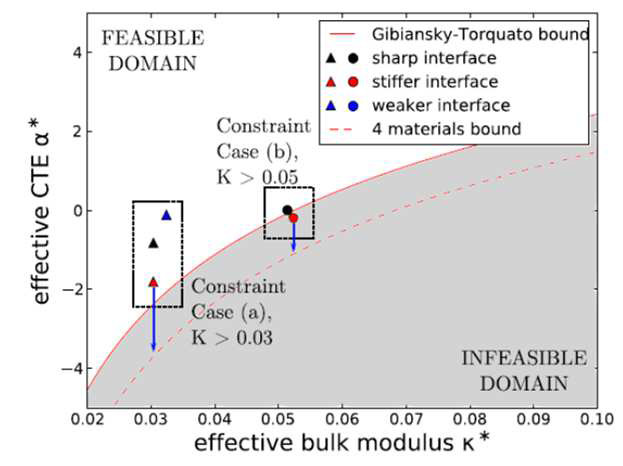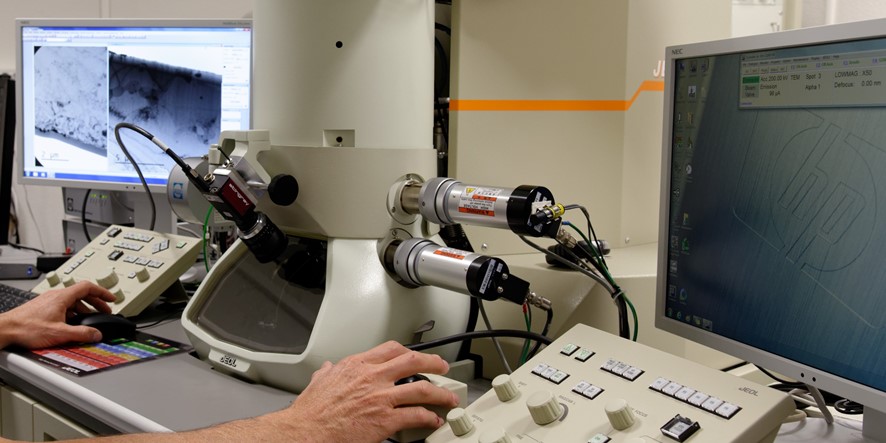Design of thermo-elastic heterogeneous microstructures, with various local mechanisms (from [4]):


On the left, theoretical thermo-elastic bounds derived by [Gibianski & Torquato, 1997, JMPS], predictions with a sharp interface from [Sigmund 2000, JMPS] and comparison with graded interfaces [4]. On the right, various design not best performant but providing insight on the operating mechanisms.
[1] BensØe M.P. , Sigmund O. , 2004, Topology optimization, Springer, 370P.
[2] Vermaak N., Michailidis G., Parry G. Estevez R., Allaire G. Bréchet Y., 2014, Material interface effects on the topology optimizationof multi-phase structures using a level set method, SMO, 50:623-644
[3] Faure A., PhD, Université de Grenoble Alpes, 2017, Optimisation de forme de matériaux et structures architecturés par la méthode des lignes de niveaux avec prise en compte des interfaces graduées
[4] Faure A., Michailidis G., Parry G., Vermaak N., Estevez R., 2017, Design of thermo-elastic multi-materials structures with graded interfaces using topology optimization, S.M.O., 56:823-837
[5] Allaire G., Dapogny C., EstevezR., Faure A., Michailidis G., 2017, Structural optimization under overhangs contraints imposed by additive manufacturing technologes,J Comp Phys, 351: 295-328
Contact : Rafaël Estevez



